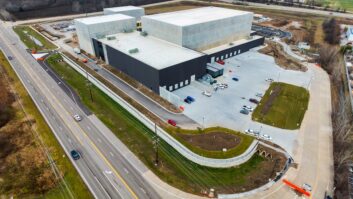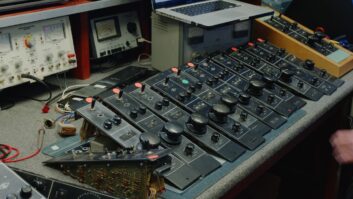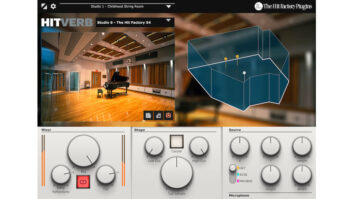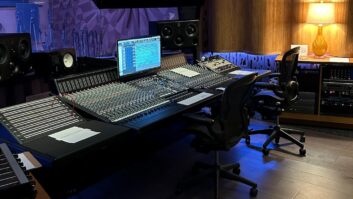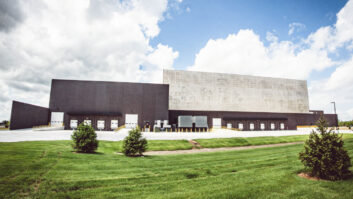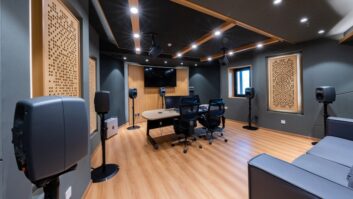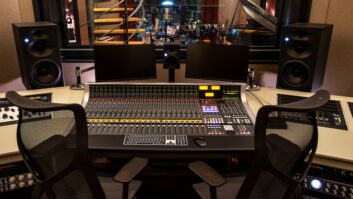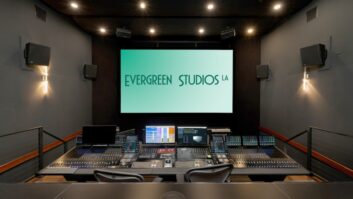You could say that evolution and history combine in the reopening of Studios 301 in Sydney, Australia. Behind the studio’s brand-spanking-new facade is the legacy of what may be the oldest continuously operated recording facility in the world. The most recent incarnation of Studios 301-which opened to much fanfare on the evening of November 19, 1999, with a party that brought out much of Australia’s media elite, including Rupert Murdoch-resides in a former bank and bank records warehouse in the Sydney suburb of Alexandria, a couple of miles from the city center. It’s a multi-ethnic, bohemian residential area that is attracting many of Sydney’s music business heavies.
301’s new owner is Tom Misner, the founder of School of Audio Engineering, who began his audio career in Sydney more than 30 years ago. In addition to the facility, Misner has purchased about 30 properties within a few blocks of it, some of which are being converted to satellite offices for things like studio management and technical support; others are purely for investment purposes. But it’s plain that the studio building itself is the focus of this venture. Valued at $6.5 million including equipment, the renovation took the better part of a year and neatly nestles five studios into a 12,000-square-foot edifice, complete with a garden patio and a three-bedroom apartment.
The link to the facility’s past is not immediately apparent in the impressive new construction. But when Misner bought 301’s assets, he also acquired much of the audio heritage of Australia, whose industry was largely colonized, like the country itself, by the uK. The original facility was started in 1926-pretty much concurrent with the beginning of pro audio itself-as the Columbia Graphaphone Studios, making it the world’s second-oldest studio. It later became EMI, which continued to bring over new technologies. Studios 301, named for its street address on Castlereagh Street, was bought out by its management in 1996, and Misner bought it in February 1999.
That location’s recording facilities have been gutted, but it remains operative as a mastering facility, one of the leading ones in Australia, and several staffers remain there, although there is much shuttling going on between the two locations. The intent, says Misner, is to leave mastering at the original location, although that may change at some future point, understandable considering the amount of properties he has acquired around the new location.
The LegacyIn its heyday, 301 was constantly busy as the EMI facility for most of Asia. Hit records for recording artists such as the Little River Band, Split Enz and Crowded House were done there. But if there was a jewel in this crown, it probably belongs to Slim Dusty, Australia’s most famous country singer, who in 1957 recorded “The Pub With No Beer” at 301. The record went on to become the single biggest-selling recording in Australian history and produced the first-and only-Gold record award for a 78-rpm disc.
Martin Benge went to work at 301 in 1971 as a staff engineer and went on to manage the facility for nine years. After going freelance, he returned to the studio last year to work as a consultant for its new edition. He recalls that through the 1970s, the consoles at 301 were of EMI design and manufacture, vintage mid-1950s. “But they did have one of the first transistorized recording desks ever made, and it was locally built,” he says. “Otherwise, it was all valve consoles with four channels and large rotary pots. Later on, when I came here, there were two transistor consoles and one valve desk. In 1973, we put in one of the Abbey Road TG Series consoles built in the uK, and that lasted right through 1978, when the studio was renovated and we installed three Neve 8078 consoles, one with Necam automation for mixing and the other two without. In 1986, we put in the first SSL console.” Benge says the local market was happy for a long time with the more vintage technology. “But once the Australian music market heated up in the 1980s, and we had bigger bands passing through, they started demanding more automation and channels,” he explains. “Also, our closest competitor, Rhinoceros, had already put in its first SSL. So it was very much a market-driven decision, [as] much as we and lot of other people loved the old valve desks.”
Going To The BankThe exterior of the new facility is plain, almost dowdy, part of the strategy to keep the facility and its clients as anonymous as possible. Inside, however, the implementation is first-class and was designed by Misner, with architectural and acoustical consulting from Roger Darcy and Nick Whittaker of London-based Recording Architecture.
Studio 1 is centered on a 3,800-square-foot recording space that can hold as many as 70 musicians for tracking, scoring and string overdub sessions. Here, as in the other studios in the complex, all floor and wall surfaces are made of solid concrete and completely floated. Misner chose concrete to minimize resonance and create a more predictable acoustical response, using trapping and diffusion to tune the spaces. Broad-band low-frequency trapping is used extensively throughout the two main ground-floor studios, with curved wooden perforated ceiling diffusors and square-holed back wall diffusors in the control rooms. “Concrete is not unusual for studio floors, but most people use layers of plasterboard for walls, and when sound hits it, it gives, and the energy is converted from acoustical into mechanical,” Misner explains. “Concrete is more predictable.”
Studio 1 has a decay time of 2.2 seconds, and the smaller, more rock-oriented Studio 2 has an RT of 1.2 seconds. Both studios make extensive use of booths, not only to create various isolation areas, but also to affect the resonance of their main spaces. Studio 1 has folding doors along the length of its largest iso booth (which has its own RT of 1.5 seconds and a totally diffused ceiling), which can change the room’s response. Misner specified custom airtight doors from German manufacturer Rehau.
Studio 2’s 1,200-square-foot main room uses very hard stone surfaces to create a hard ring for drums; high frequencies are mitigated by the ceiling treatment. The larger Studio 1’s ceilings are characterized by pyramidal diffusors, abetted by mid/low-frequency traps, tuned to around 800 Hz, on the walls. Studio 1 has a Neve Legend VR console with 48 inputs and Flying Fader automation; Studio 2 is fitted with a 64-channel SSL G Plus with ultimation. The consoles, Misner says, are both widely familiar to Sydney’s engineering base and are competitive in the overall market. (As yet, Australia has no installed SSL 9000 J or MT, or Neve Capricorn consoles.) Main monitoring is via Genelec speakers, and both Studios 1 and 2 are surround-capable; Studio 1 has 8-channel capability.
upstairs, three smaller studios are based around mid-market consoles, including a Mackie digital and an Amek Langley Big. All the studios share wiring (both network and tielines including an Internet link for Webcasts) and a common central machine room with formats including Sony 3348, Tascam 38, Akai digital dubbers, Digidesign Pro Tools and analog formats.
Although Misner’s approach to designing studio classrooms is consistently and spartanly practical, Studios 301’s aesthetic outfitting is relatively opulent. Lounges are plush, and the 120-year-old Oregon wood beams that were used to build the bank back in the 1920s are very handsome. Studio 1’s control room has a large floor-to-ceiling mirror on the right-hand side that balances the room acoustically and adds the perception of space. “Besides, I like to watch myself mix,” adds Misner, who is returning to recording and mixing-the milieu in which he started-with four production projects currently under way. But the efficient pragmatism that characterizes SAE is also evident here, with small but telling details such as the placement of mic panels at waist height, which will endear the studio to assistant engineers about ten hours into a tracking session. In addition, air conditioning outputs are located above the soffitted speakers in the main control rooms instead of venting directly downward onto the mixing position.
Audio-for-video capability is integral to the wiring design and systems choices, with a Motionworker system for sync throughout the facility and two DoReMi hard drive video systems whose outputs are assignable to all rooms.
The new facility comes into being only weeks after the opening of Fox’s theme park/film production and post-production venture, also in Sydney. In fact, Misner asserts that Fox purposely left film scoring stages out of its design plans because one of Studios 301’s rooms would give Sydney its first world-class scoring stage in decades. And 301’s design and intent are in line with what Misner sees as the future of the studio business. He says that, with midsized facilities being further squeezed as home recording-which hit Australia in force in the early 1990s-takes more of the music market, a high-level zone is also created for “superstudios,” as Misner refers to them-a few in each major market-to cover the upper-tier, bigger-budget work. “That’s the thing about the entertainment industry becoming global,” he explains. “There’s always going to be local markets for music and other entertainment projects. But the upscale work is going to be able to move easily around the world through studios like 301 here. It’s just the way the world is going.”
